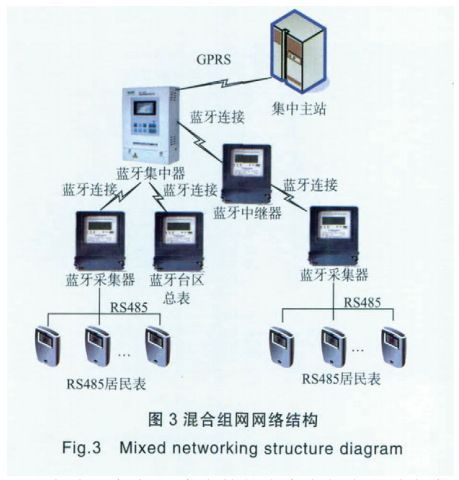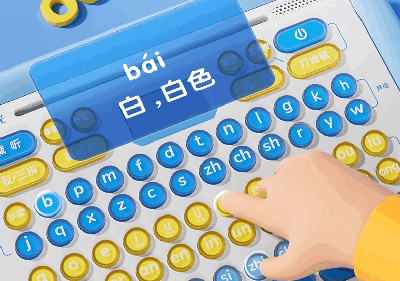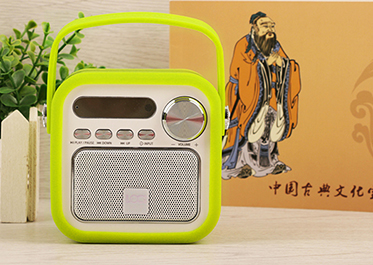- Home >> News >> Blog articles >> Internet of things
Development of Bluetooth wireless low-voltage meter reading system
At present, in most low-voltage centralized reading projects, the communication between the meter and the concentrator uses a low-voltage carrier channel. Although the low-voltage carrier channel has the advantages of not laying communication lines, effectively utilizing its own resources, and transmitting power data through power lines, there have always been insurmountable technical obstacles in terms of communication reliability of low-voltage carrier channels.
The own advantages of Bluetooth technology can overcome various defects of carrier communication. Compared with other on-site wired connection data transmission methods, Bluetooth technology has changed the limitation of difficult wiring in the on-site environment, can realize fast and convenient wireless connection, and is easy to maintain.
Compared with other wireless technologies such as infrared, Bluetooth communication technology has the advantages of strong anti-interference. In the environment of unpredictable interference sources (especially in strong sunlight), infrared transmission is extremely susceptible to interference, while Bluetooth uses high-speed frequency hopping and Time-division multiple access and other technologies prevent interference sources from frequency hopping in the same way. Bluetooth communication can be applied to various harsh communication environments. At the same time, unlike the infrared transmission protocol, Bluetooth requires that the transmitting devices must be aligned with each other. Bluetooth uses omnidirectional wireless microwaves for transmission, which can penetrate walls and other non-metallic obstacles, so Bluetooth technology is better than other wireless communications. The technology is more stable.
1. Construction of Bluetooth module
1.1 Hardware structure of Bluetooth module
The article chooses the classic BlueCore2-Flash BC215159B chip to design the embedded Bluetooth data transmission module.
The flash memory Flash in the BlueCore2 chip is mainly used to store the program code and setup code of BlueCore2. USB and Universal Asynchronous Receiver/Transmitter (UART) standard interface provide a simple communication mechanism for communication with other devices. The pulse code modulation (Pulse Code Modulation, PCM) interface provides a two-way digital signal channel with other hardware devices. The Serial Peripheral Interface (SPI) is a synchronous serial peripheral interface that enables the Micro Control Unit (MCU) to communicate and exchange information with various peripheral devices in a serial manner. BlueCore2 The serial peripheral interface provides an effective read and write mechanism between internal random access memory (Random Access Memory, RAM) and external memory for loading, debugging and validating application software. The Parallel Input/Output (PIO) port is the common Input/Output (I/O) interface of BlueCore2. The Digital Signal Processing (DSP) unit performs the set mathematical operation on the transmitted digital signal, so as to achieve the purpose of converting or extracting the required signal. The external crystal oscillator (or external crystal oscillator) (External Crystal Oscillator, XTAL) provides clock and digital pulse for the work of the chip. The process of receiving signals by the Bluetooth module is as follows: when the 2.4 GHz Bluetooth signal enters the BlueCore2 chip through the RF input (Radio Frequency Input, RF IN) port, it is demodulated by the modulation and demodulation unit, and related operations are performed by the digital signal processing unit, and The useful signal is extracted; the signal is stored in the internal memory, and then the command of the micro-processing unit is executed, and the processed signal is sent out through the input/output interface. The process of sending a signal is reversed.
1.2 Software Architecture of Bluetooth Module
Before the Bluetooth channel is established, the master and slave devices have to go through the process of searching, frequency pairing, and connection establishment. Therefore, the software implementation of the Bluetooth module should include the implementation of the protocol stack, the Bluetooth establishment process, and the application model. The architecture of the Bluetooth virtual machine stack is the core component of the Bluetooth module software.
The most important communication protocols and related programs of the Bluetooth module are stored in the internal read-only memory (Read Only Memory, ROM) of BlueCore2, mainly including virtual machine (Virtual Machine, VM) application software, radio frequency communication (Radio Frequency Communication, RFCOMM) protocol , Service Discovery Protocol (Service Discovery Protocol, SDP), Link Management (LinkManager, LM) and Link Control (Link Controller, LC) protocols. Among them, the RFCOMM serial port defined in the Bluetooth protocol stack provides a virtual serial port for various applications of the Bluetooth module. This virtual serial port can be used like a standard wired serial port, and can support up to 2 Bluetooth devices at the same time. 60 communication connections. RFCOMM can not only aim at the connection between directly interconnected devices, but also realize the interconnection between Bluetooth devices and network access devices. The embodiment of the Bluetooth protocol stack is binary code, the user only needs to write the application program running on RFCOMM, and the application program that protects the Bluetooth protocol stack will run under the interpreter of the virtual machine. The Bluetooth Service Discovery Protocol (Service Discovery Protocol, SDP) mainly allows two Bluetooth devices to meet and establish a connection. It is a protocol based on the client/server structure. The Bluetooth specification also includes a standard-compliant interface definition: the Host Controller Interface (HCI), which is part of the Bluetooth protocol stack. The HCI driver provides an interface for communication between the host (the consumer of the Bluetooth module) and the host controller firmware (the Bluetooth module itself).
After the program code is compiled, it can be written into the Bluetooth chip through a dedicated burning device. Under normal working conditions, a Bluetooth device (such as a Bluetooth concentrator) automatically searches for other Bluetooth devices (such as a Bluetooth repeater) around it by running the Bluetooth service search protocol, and establishes a Bluetooth channel to form a micro-network, thereby achieving communication with other Bluetooth devices. The function of data communication between.
2. Scheme Design of Bluetooth Meter Reading System
Under the limitation of low power consumption and short distance, considering factors such as obstacles and power supply radius of the station area, by adopting Bluetooth ad hoc network and automatic relay, low power consumption, long distance and multi-obstacle data transmission can be realized, thus It solves the technical problem that the traditional wireless point-to-point communication method cannot meet the low-voltage centralized reading and monitoring of power users. In the low-voltage centralized reading system based on Bluetooth technology, the Bluetooth communication network is mainly composed of Bluetooth concentrators with Bluetooth modules, Bluetooth energy meters, Bluetooth collectors and Bluetooth repeaters and other equipment. Use bluetooth electric energy meters on site, or install a bluetooth collector in each meter box where the meters are centrally installed, collect the data of the electric energy meters in the meter box through the RS485 interface, and then transmit the data to the public transformer station area through the bluetooth network Bluetooth concentrator, and the concentrator transmits the collected data to the background master station system through the GPRS mobile private network.
In the bluetooth technology-based low-voltage centralized copy networking scheme, according to different application scenarios, the local network built using the short-distance bluetooth network mainly has the following two networking schemes.
2.1 Bluetooth and RS485 hybrid networking scheme
The network structure of the networking scheme using Bluetooth concentrator (+Bluetooth repeater)+Bluetooth collector+RS485 electric energy meter is shown in Figure 3.

In this scheme, multiple electric energy meters in one meter box are connected to the RS485 bus through its own RS485 interface, and the downlink communication port of the Bluetooth collector is the RS485 interface, which communicates with all RS485 electric energy meters in one meter box through the RS485 bus. communication. The uplink communication port of the Bluetooth collector is a Bluetooth interface, which can be directly connected to the Bluetooth concentrator through the Bluetooth communication link, or can use the Bluetooth repeater to realize data communication with the Bluetooth concentrator. The Bluetooth repeater can be controlled by a Bluetooth The collector can also be realized by installing other Bluetooth relay devices. The bluetooth station area general meter and the bluetooth concentrator are installed in the same metering box, and the data transmission between each other is realized through the bluetooth module.
This networking scheme is suitable for the occasion of centralized installation of electric energy meters, and is also suitable for the transformation of low-voltage centralized reading in the original older residential station areas. It has the advantages of flexible scheme design and cost-saving transformation.
2.2 Pure bluetooth device networking scheme
In this solution, the built-in Bluetooth module of the energy meter can be relayed directly or by other devices with Bluetooth modules (such as Bluetooth collectors, Bluetooth energy meters, etc.) to realize data communication with the Bluetooth concentrator.
This solution is suitable for occasions where energy meters are installed more intensively. One Bluetooth collector can be installed in each energy meter box. After the Bluetooth collector collects the data of the Bluetooth resident meter, it will be uploaded to the Bluetooth concentrator; it is also suitable for electric energy meters. In the case of scattered installations, such as one meter per household in urban or rural areas, each Bluetooth meter can be relayed through adjacent Bluetooth devices (such as Bluetooth meters, collectors, etc.) to transmit data to the Bluetooth concentrator.
2.3 Data communication process of Bluetooth centralized copy system
The Bluetooth communication protocol supports two-way data communication. As a Bluetooth node, the Bluetooth collector can collect and upload energy meter data, and can also receive various commands from the Bluetooth concentrator. At the same time, it can also be used as a repeater if necessary. , to relay data from other Bluetooth nodes. In the bluetooth ad hoc network and automatic relay network, bluetooth collectors, bluetooth energy meters, etc. can be used as bluetooth relay devices.
After the various data and commands issued by the master station arrive at the Bluetooth concentrator, they are relayed directly or through multiple Bluetooth nodes and sent to the target Bluetooth collection node. After receiving the data and commands, the target Bluetooth collection node sends the corresponding data, The command is forwarded to the energy meter. It is also possible to take advantage of the strong real-time characteristics of the Bluetooth network, and the Bluetooth node can actively upload emergencies to the information collection master station for real-time monitoring, fault alarms, and anti-electricity theft.
When the energy meter uploads data to the acquisition master station, the Bluetooth acquisition node first receives the data, and then directly or through multiple Bluetooth relay nodes, transmits the data to the Bluetooth concentrator, and after the data is processed by the concentrator, it moves through GPRS The private network uploads to the collection master station. When the straight-line distance of the Bluetooth nodes is far, and the Bluetooth collection nodes cannot form a network, the network can be formed by adding a Bluetooth repeater, so as to realize the seamless data transmission of the Bluetooth data network.
Summarize
The practice shows that the wireless meter reading system using bluetooth technology has great advantages compared with the carrier meter reading system and the infrared meter reading system. This system is not only suitable for occasions where the installation of electric energy meters is relatively scattered, such as the situation of one meter per household in urban or rural areas, but also for occasions where electric energy meters are centrally installed. Especially for the transformation of low-voltage centralized reading in older residential areas, it has the outstanding advantages of flexible design schemes and cost-saving transformation. The wireless meter reading system based on Bluetooth technology is especially suitable for occasions where the user load changes greatly and the carrier channel is unstable. It can also be used as a supplement to the power line carrier communication when the quality of the power grid is poor and cannot provide a good channel for the carrier.
The above is the development example of the bluetooth meter reading system introduced by Shenzhen Zuchuang Microelectronics Co., Ltd. for you. If you have a need for the development of a wireless bookmarker solution, you can rest assured to entrust it to us. We represent a variety of single-chip microcomputers, voice chips, dual-mode Bluetooth ICs, and wifi chips. Brands include Songhan MCU, Yingguang MCU, Jerry Bluetooth, Ankai Bluetooth, Allwinner, and Realtek. Our technical services include: PCB design, microcontroller development, Bluetooth solutions, software and hardware custom development, APP development, small program development, WeChat official account development, etc. It can also undertake the design of intelligent electronic products, the development of living appliances, the research and development of beauty equipment, the application of Internet of things platform, the smart home control system, the development of TWS earphones, Bluetooth earphone speakers, the development of children's educational toys, the design of electronic education products, etc.
Proposal recommendation
- TOP



